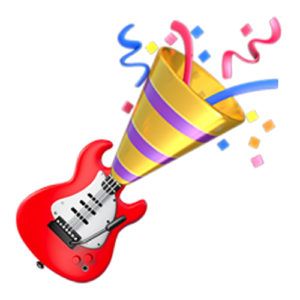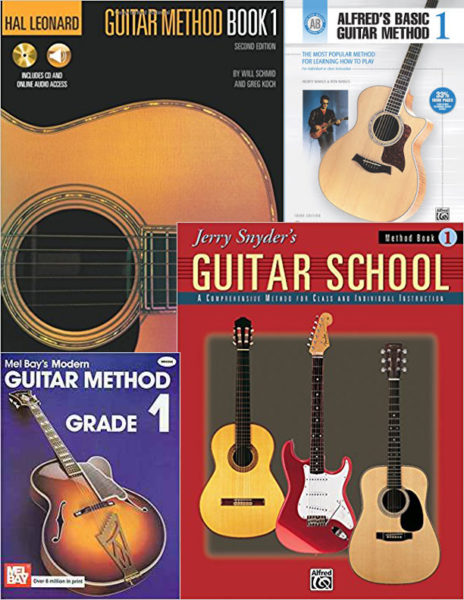
Learning an instrument can be very difficult at first. There are new fine motor skills to learn, and you have to decipher a new written language. After doing all that work, you certainly want to make sure you’re having fun. Musicians get to have so many amazing experiences, and so can you. Here are some things to do to make sure you’re having the best time you can have learning guitar. Some of these may seem pretty obvious, but they are what really makes a difference. If you check all the boxes, you will most definitely find that you are enjoying yourself.
1. Take Guitar Lessons
In our modern world it’s easy to skip out on this step. There are tons of resources on the internet, especially with the amount of video lessons on YouTube. While most YouTube lessons don’t come with a price tag, there’s nothing like a live guitar teacher to help you along the way. Many people have success with self-study, but it is very easy to get overwhelmed by all of the information available. A good guitar teacher will put you on the right path and make sure you stay on it.
If you’re already taking guitar lessons and you’re not having fun, be open with your teacher about any confusion you’re having. Guitar teachers will be able to pick up on the fact that you are not practicing, and not progressing because of it. By letting them know what you are experiencing when you play at home, you can help them find a way to keep you inspired. It’s also important to make sure you are in the method book that works for you. I did a review of four of the most popular books for guitar for beginners in my previous post. Read it here.
2. Practice!
Before you roll your eyes, really think about this. Learning an instrument can be very fun, but it also takes some dedication. The only way to really enjoy yourself is to have a sense of knowing what you’re doing. This of course, takes practice. Knowing how to practice is just as much of a skill as knowing how to play the guitar, and if you don’t spend time doing it, you’re not going to learn!
It can be very difficult to fit a practice routine into a modern schedule, no matter what age you are. I have so many younger students who are busier than my adult students. Planning your week of practice ahead will really help. If possible, try to find a consistent time during the day. It is also very helpful to set a goal to practice every day for a month (or even a week or two). Results come after these periods of time, not just a couple days. If you stay consistent with your practice for this amount of time, you will start to figure out how to hone in on your guitar skills. You might just have fun while doing it too!
3. Listen to Music
I have many students who don’t know what to say when I ask them what music they like. Especially with younger students, the act of learning an instrument sometimes come before they really have learned to enjoy music. I also have plenty of students who love to listen to music, but do not listen to anything that has guitar as a prominent instrument. Listening to music trains the ear, it also helps you build up an emotional connection to music. It is because of this that the most inspired musicians are the best listeners.
You may already listen to music, and you may be very inspired by some notable guitarists. Perhaps this is why you started learning guitar in the first place. Take your listening a step further, learning an instrument is an opportunity to expand your musical interests. Start broadening the genres you listen to in order to learn about even more notable guitarists. If you’re taking guitar lessons, ask your guitar teacher for recommendations. If you’re not, please first reread #1, then do some research into notable guitarists in all genres on your own. It’s important to have an open mind. If you allow yourself to enjoy a genre you are not used to listening to, you could possibly find your new favorite artists!
4. Go see Live Music
Going to see live music is taking listening to music to the next level. There is no better way to get inspired and to learn about the instrument than to see people play. Live music can take place at a huge variety of venues: stadiums, concert halls, bars, churches, restaurants, and even on the street. If your favorite artists are still performing and happen to be coming to your area, spend the money to go see them. The inspiration will be worth every penny. Find out about where live music happens in your town. With social media, this is easier than ever to keep track of. If there are musicians in your town that you enjoy, become a fan. Go to a bunch of their shows. You will learn from them and enjoy yourself all while supporting local music.
In addition to seeing live music in person, there is an unlimited amount of concert footage on YouTube. Watching live performances helps you focus on the music better. Plus you get to see how your favorite artists performed, they may be really wild performers!
5. Learn the Music You Want to Learn
Being successful at an instrument means starting out with a goal. If you have a favorite type of music, or if there is something that is inspiring you to play the guitar in the first place, then your goal should be to learn how to play it. If you are curious how one of your favorite songs is to play on guitar, there is no harm in looking up how to play it. There are online resources for practically every song. You can even watch guitarists playing more simplified versions on YouTube.
If you are taking lessons, be open with your teacher about what you want to learn. Your teacher can then help guide you in the right direction when the time is right. It is very important to listen to your teacher however. If he or she is giving you specific materials to practice, be sure to practice them well.
6. Play Music with Others
I can’t emphasize this enough. In essentially every culture around the world, music has been used for community building for a very long time. There is something very magical that happens when you play music with other people. The great news is you are working towards experiencing this. Not only is this an opportunity to get inspired while increasing your skills, it is also an opportunity to meet new people. If you have any friends or family who play music, reach out to them right away. If the genre or instrument they play doesn’t seem to match yours, see if you can make things work.
In order to meet new people to play music with there are many ways to put out feelers. Putting an ad on a community board at a music store, library, or anywhere else is a good way to start. You can also try posting ads on online outlets such as craigslist. Most areas have many events you can take part in. These include open mics, meet ups, jam sessions, or community ensembles. If you don’t feel comfortable playing guitar in front of or with other people just yet, it’s always fine to observe. It’s still a great way to see what musicians live nearby and to be inspired by their playing.
7. Perform
Performing can be very scary at first, but it does get to be an enormous amount of fun. For a beginner, performing does one major thing: it gets him or her to practice. If you practice diligently for a performance, you will be very satisfied with your results. It is also a great way to show off your new skills to friends and family.
Finding ways to perform can be a bit tricky. If you are taking guitar lessons, there is a chance the school you are part of will hold a recital. If you have not performed in a recital, ask your teacher if there will be a recital any time soon. Open mic nights are a good way to get comfortable performing in front of people. All open mic nights are different, but they will generally be very supportive of any beginners who have the courage to take the stage. If it’s your very first performance, let everyone know! You will receive a lot of encouragement afterwards.
It’s also just good practice to get comfortable playing around people. If you are happy with your progress on a new song, don’t be afraid to share it with everyone you can. If it’s a nice day, take your guitar to a park and practice. Just knowing there are other people around makes practicing feel a lot like performing.
8. YouTube/Social Media
Making videos of yourself playing is a way to perform without leaving the house. This helps you practice as well, because if you want to make a quality video you need to have a quality performance. YouTube is full of amateur musicians performing their covers and originals, so your videos may even be an opportunity to connect with them. If you don’t feel comfortable having your videos out there for the entire internet to see, post them on your favorite social media outlets so your friends can see your progress.
To find out more about Lambertville, New Jersey based guitar teacher Alan Rigoletto, please read his About Me page.
